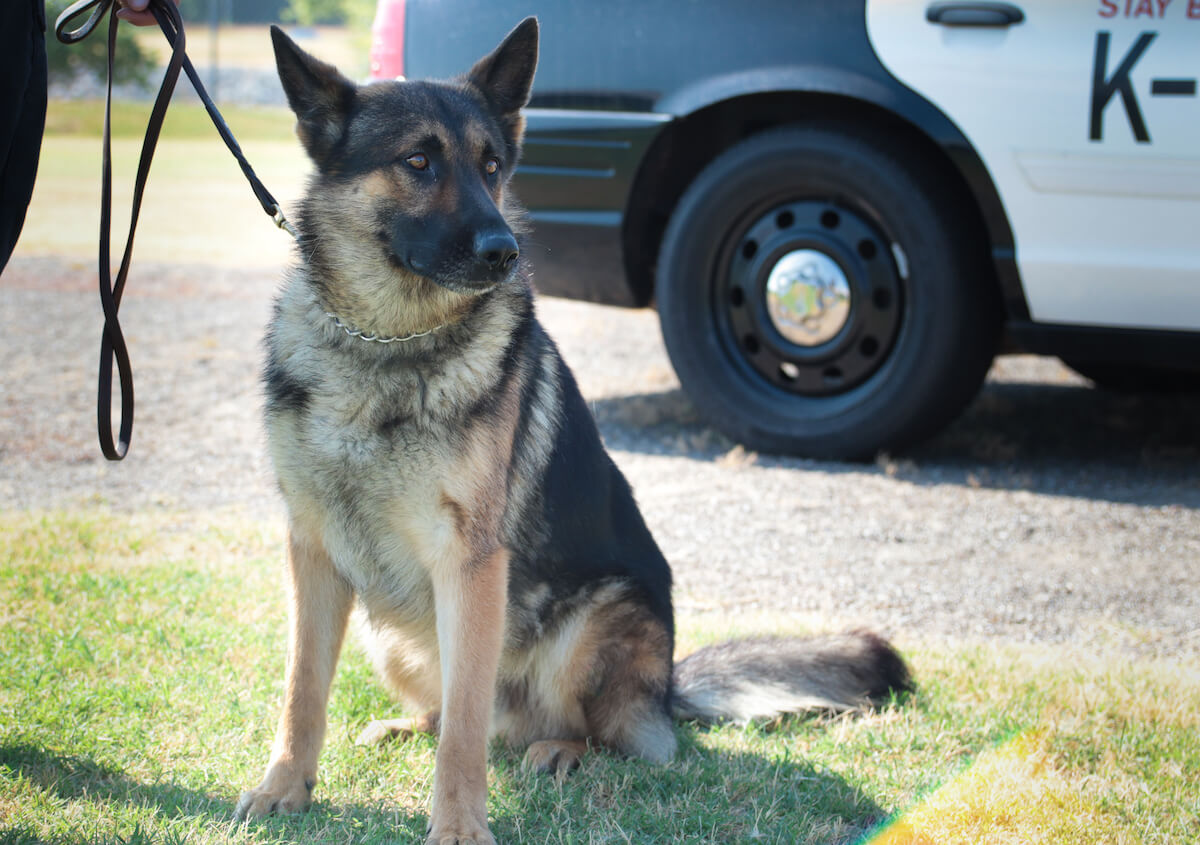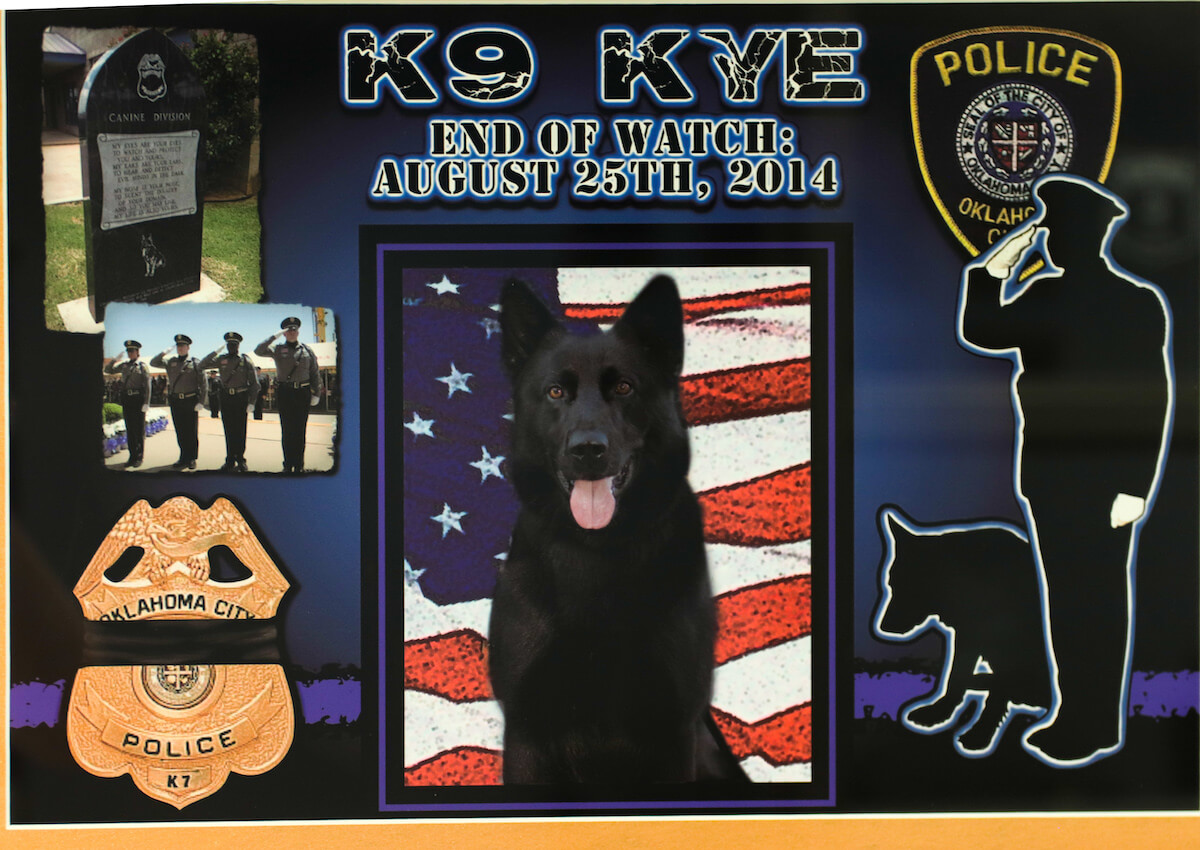The Oklahoma City Police Department’s Canine Facility is searching for a new dog after Canine Officer Kurt passed away in late July. The facility currently has nine handler-dog teams, and any new canine will go through a 14-week training before joining its ranks.
It’s with deep sadness we report the death of Canine Officer Kurt. Kurt passed away last night after a brief illness. His partner MSgt. Cook and many other friends and family surrounded him. K9 Kurt faithfully served the OKCPD and citizens of OKC from 2013-2019. pic.twitter.com/GiMHlUjAda
— Oklahoma City Police (@OKCPD) July 31, 2019
“That is definitely the worst part of our job, when you lose a dog,” said Master Sgt. Brian Cook said, Kurt’s handler and a 20-year veteran with the canine division. “I’ve thought about going and doing something else in the department, but I haven’t been able to walk away because I love working with the dogs.”
The canine division purchases untrained — or “green” — dogs to put them through a 14-week training process where they learn agility, obedience and search words. Handlers teach their dogs to search with their ears and nose and to largely ignore their eyes.
They teach drug dogs the odors of four drugs: marijuana, cocaine, methamphetamine and heroin. For dogs trained to detect explosives, there are 22 bomb odors that the canines must know.
“You train it for bombs or drugs. Not both,” Cook said, saying the dogs would have no way to differentiate between drugs and explosives to their handlers.
In selecting a new dog, the police department only purchases male German Shepherds with specific demeanors.
“We look for what’s called the ‘ball drive’. If a dog will chase a ball, play with a ball, do all that, then you can teach them to find anything. Their reward is that ball,” said Master Sgt. Dennis Reed, who has been with the unit for 22 years.
The dogs are not trained with food, he said.
In addition, handlers looking for new dogs seek pooches without sensitivity to gunfire or slick surfaces. They want dogs that are not afraid of ladders, and they judge their prey, search and defense drives as well.
Green dogs cost the city roughly $8,000 to $9,000, Cook said. Fully trained drug dogs can run $15,000 to $20,000, and bomb dogs can fetch as much as $25,000.
K-9 unit ‘best job in the entire police department’

The K-9 division of OKCPD is in the department’s emergency services unit, along with the bomb squad. The job of the K-9 unit is to remain available for calls from other officers.
If an officer calls out a K-9 unit, Cook said a signal from the dog constitutes probable cause.
“If the officer who made the [traffic] stop has reason to believe there are drugs in the car, then he’ll call for a dope dog,” Cook said. “We’ll do an exterior, open-air sniff of the car. If the dog indicates on the car, then the officer is allowed to search the interior of the car.”
It’s the handler’s chief responsibility to read signals from the dog and communicate to other officers. All dogs, however, are trained in how to take down suspects if need be.
“The dog is a locating tool, whether it’s bombs or drugs or people,” Reed said. “The apprehension part, the dog will go in and apprehend if he has to.”
Unlike other police officers, canines have no hesitation about running into danger, Cook said.
“The dog pulls you into bad tactical situations,” Cook said. “A lot of times, the suspect is hiding and the suspect can see us before we see them.”
The last canine officer killed in the line of duty was Kye, who died Aug. 25, 2014.

“This is the best job in the entire police department,” Reed said. “Think about it, we have a dog and the dog does all our work for us. You get to ride around with a dog. We get the high priority calls.”
Although the dogs technically belong to the department, a handler takes his or her dog home with them at the end of the day.
“They become part of your family, you get so attached to them,” Reed said. “Your family interacts with them, and they know when they’re at home. They have a different temperament when they’re at home. They know when they’re working. They’re almost like a pet or house dog at home.”
But Cook said the department’s dogs want to work even when they are home.
“They want to work 28 hours a day, eight days a week,” he said.
Some view K-9 use as ‘pseudoscience’
Clay Curtis is an award-winning criminal defense attorney in Oklahoma City who has his concerns about the use of police dogs.
“I’ve cross-examined hundreds of police officers,” Curtis said. “I’ve never had a dog come to court and testify he found drugs.”
He said the dogs can serve as a way for police officers to justify searching any car they want.
“The police officers, if they want in the car badly enough they can use the dogs to get around the law. There are ways for police officers to signal what they want, whether that’s lay down or bark,” he said.
Curtis also said that using dogs to find drugs is more akin to a “pseudoscience” because there has been doubt on the infallibility of a dog’s nose.
To search someone’s car should require a warrant, not the signal of an animal who cannot be cross-examined, Curtis said.
The police handlers, however, place their faith in the dogs’ abilities.
“They’ve been bred for this kind of work for hundreds of years overseas. Their size, temperament is perfect for what we do for the job,” Reed said.




















